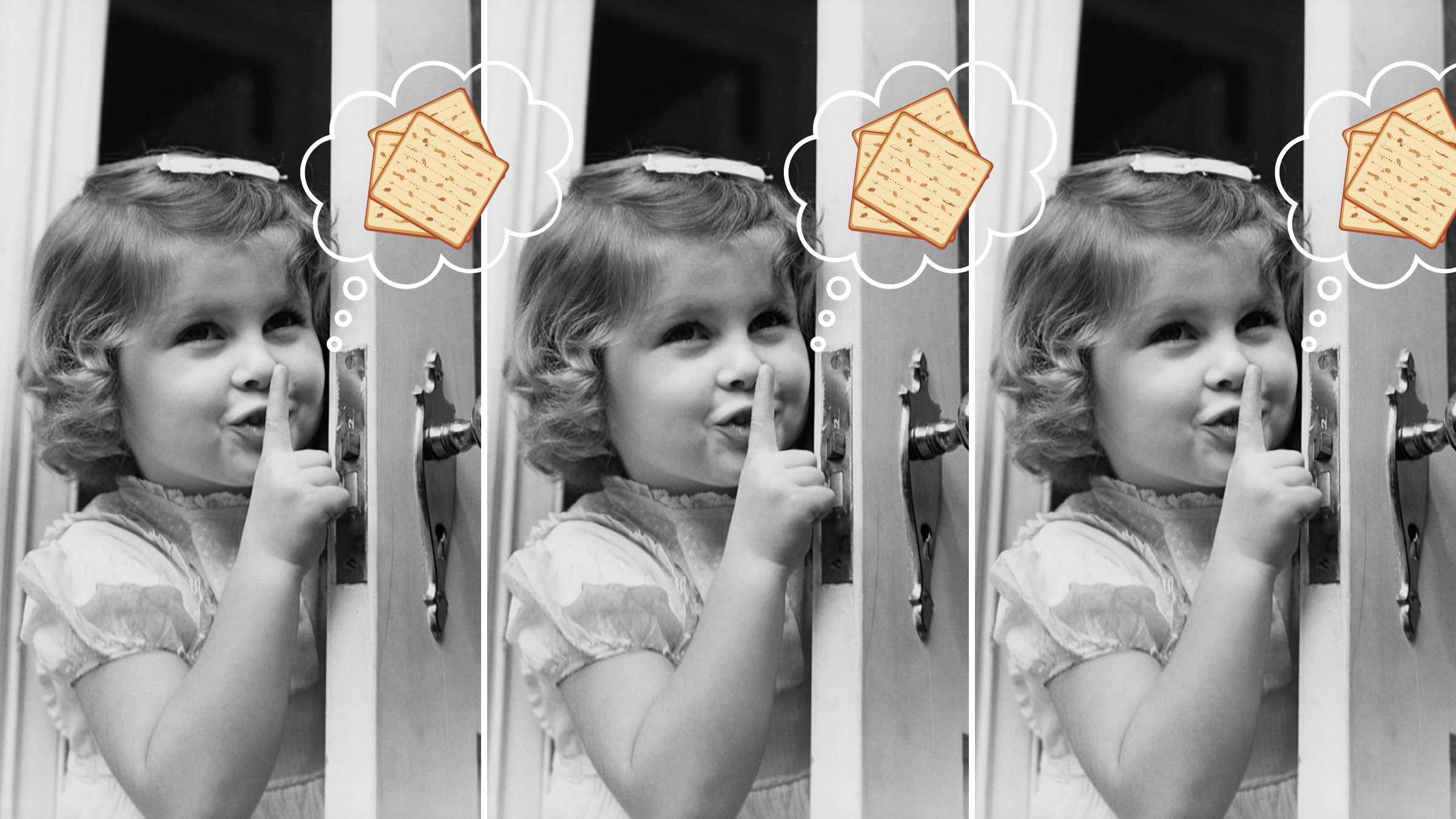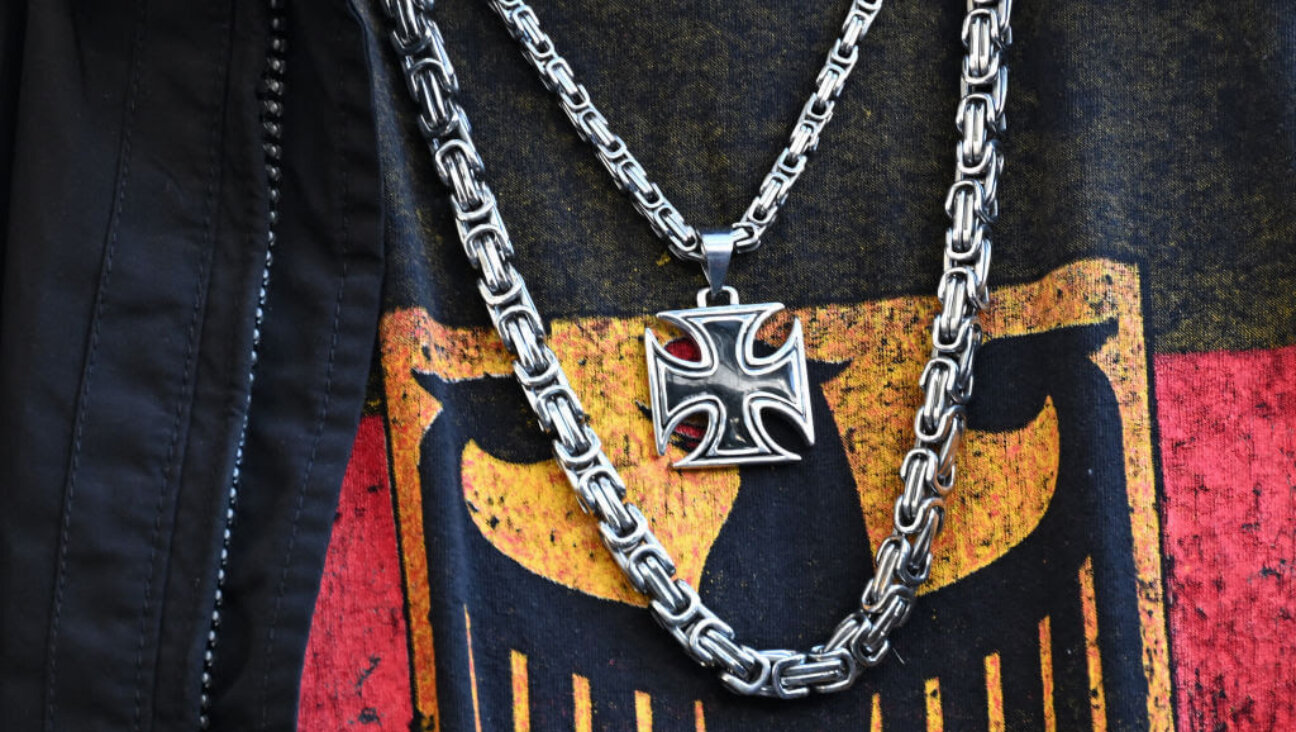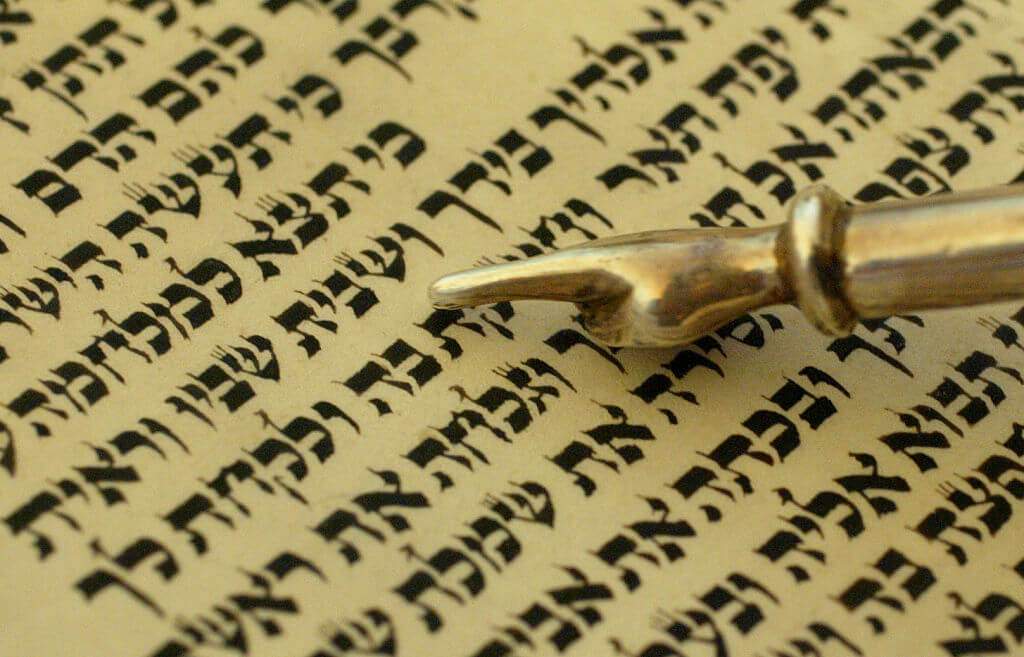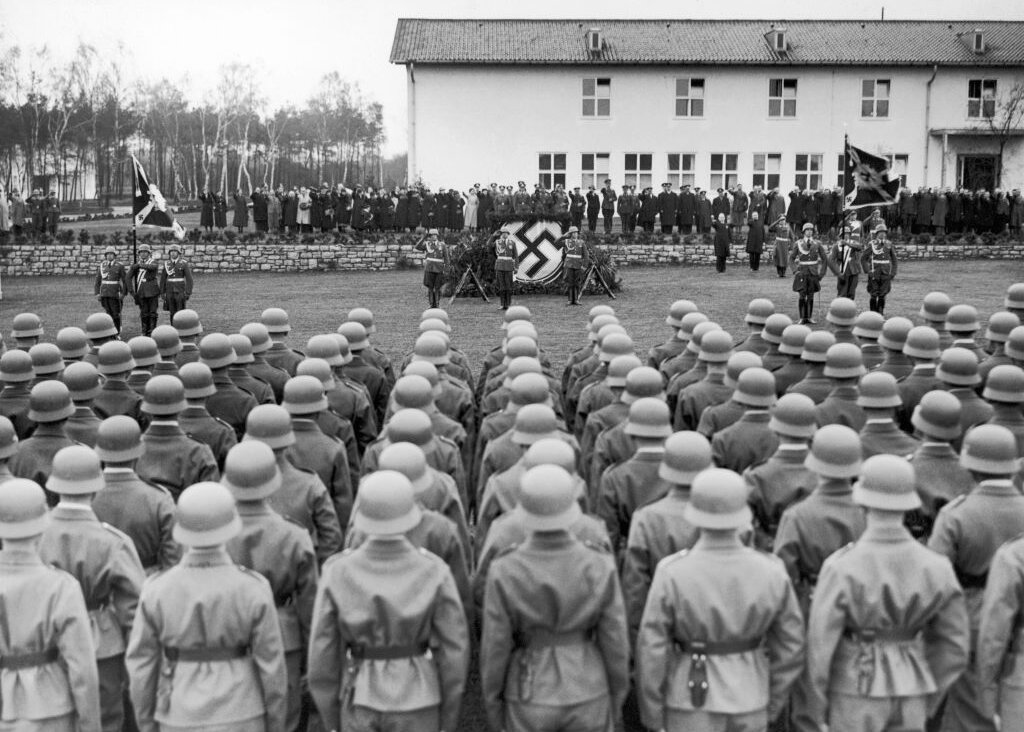If we can find the afikoman, maybe we can talk across our divides about the war
Does it matter who hides the afikoman?

“The point is that our tradition is rife with such twists,” writes Rudoren, “over how to fulfill any given mitzvah.” Graphic by Odeya Rosenband; photo by Lambert/Getty Images
I was a young adult, dozens of Passover Seders in the rear view, before I realized we were Doing It Wrong. Not the whole Seder, just the afikoman — that half-piece of matzo you tuck away in a special bag as the world’s lamest “dessert,” without which, the tradition goes, you cannot complete the Seder.
My sisters and I, like other Jewish kids the world over, knew the afikoman was one of the Seder rituals designed to keep us engaged, and we were game. We’d plot creative new spots in our living room to hide the thin package, and look forward to the little gifts we’d inevitably collect by night’s end.
Yes, I said hide, not find. In my family, the kids hide the afikoman while the Seder leader is distracted, then hold it “ransom” when the leader needs but cannot find it, negotiating for the aforementioned gifts that the leader always, miraculously, has at the ready.
I have come to understand that this approach is not the norm. Turns out most Seders have the olds hiding and the kids finding, then trading, the prized piece of matzo for those miraculously-at-the-ready gifts so the Seder can conclude.
Reader, I’ve done it both ways, and I’m here to tell you: My family’s way makes more sense. If the leader needs the afikoman, why would they hide it? Much more logical that the mischievous and easily distracted kids do so as a prank. If the kids don’t care about finishing the Seder, why would they bother looking? Just for some lame — sorry Mom — coloring book or Starbuck’s gift card? Not my kids.
But that is beside the point. The point is that our tradition is rife with such twists, with machlokot — disputes — over how to fulfill any given mitzvah, with people of good faith seeing the same situation through different, even opposing, lenses. And we continue to tell the story, generation after generation.
|
I am not suggesting that the afikoman is a reasonable metaphor for the Israel-Hamas war. I understand that some disputes have real stakes, and real moral issues weighing on each side. But we can learn a lot from disputes whose outcomes do not matter about how to deal with those that do. And thinking seriously about something as silly as who hides the afikoman might at least help us find ways to sit around the same Seder table with people who disagree about the very substantive challenges we face, to discuss what divides us with humility and respect. Here are a few principles I’m trying to hold onto during these days of difficult conversations:
|
|
The tradition of the afikoman, meanwhile, appears to come from a line in the Talmud that reads, “We grab the matzot on the night of Passover, so that the children will not sleep.” Our editorial fellow, Odeya Rosenband, plumbed the depths of the internet, and found that — at least according to this recent article in Haaretz — the tradition of parents hiding it dates back to Maimonides and the 12th century, while my family’s twist, kids hiding and holding it for ransom, started in the 17th. North African Jews, meanwhile, wrap the afikoman in white and carry it around on their shoulders, according to the National Jewish Outreach Project, while Iraqi Jews conduct a dialogue while holding it. “Where are you from?” the adults might ask. “Egypt,” the kids answer. Where are you going? Jerusalem. Etc. A Chabad rabbi named Yossi Yaffe was quoted in this 2019 article saying the hide-and-seek afikoman ritual teaches “children to search and look for this wonderful future.” One of the most comprehensive resources Odeya found was Sefaria’s “Story of the Afikoman,” which lists biblical and rabbinic references to the afikoman, as well as modern stories and mentions in the media. “There is also symbolism about having the next generation involved in bringing together that which was broken,” it notes, “particularly that which was broken by the previous generation.” Perhaps the afikoman is something of a metaphor for the war after all. |















